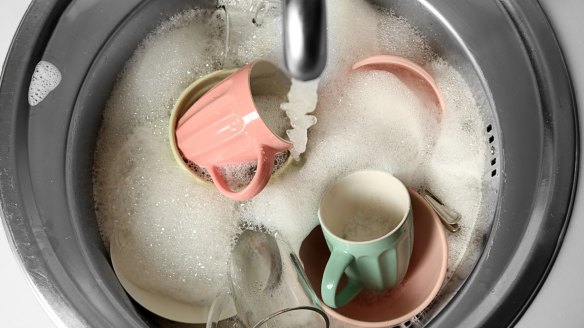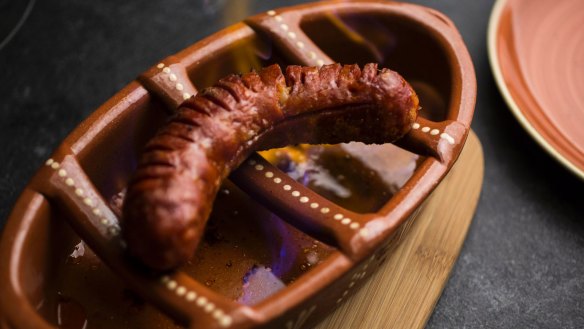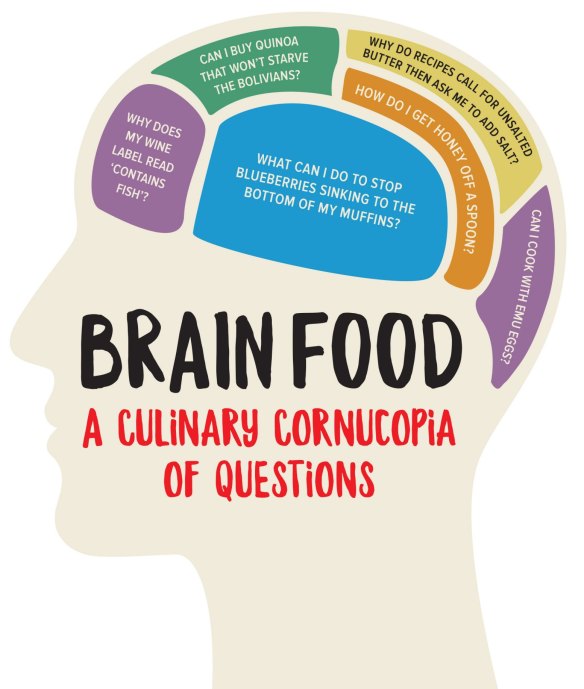Do you really need to wash your dishes in hot water?

Why does hot water clean better than cold water? G. Ernst
Hot water melts fat, liberating it from the surface of the tableware or cookware into the water, where it is dispersed by the surfactants in the detergent. It is so useful.
There is a time, however, when you need to only turn the cold water tap on, and that is when rinsing off uncooked animal protein such as raw eggs or chopped flesh. If you use hot water, you will cook the protein in the flesh onto the plate or dish. Even though many home hot water systems are set to 49C, it is still best to rinse off things like sausage mince or bowls used to beat eggs in cold water first.

Why are there so many different types of chorizo? Some are soft, some are raw, others are really hard. N. Moon
Remember a simpler time when we didn't have chorizo? When Jamie Oliver didn't take Britain to the brink of war by polluting paella with chorizo? Now chorizo is ubiquitous. Supermarket shelves are filled with chorizo-flavoured crisps, chorizo-flavoured baked beans, and even SPAM has made a chorizo-flavoured pork product. I have tried it so you don't have to and I think it's vile.
I love real chorizo, however. Pork, fat, salt, garlic and Spanish paprika are stuffed into a skin and allowed to ferment. (There are various regional variations that include different herbs but that would require much more space and an Australia Council research grant.)

There are two main types of chorizo. The softish ones are semi-cured – fermented but not dried. These are the ones you use in Spanish stews such as callos a la madrilena. They must always be cooked.
Then there are the hard ones. These are cured and have been fermented then air-dried and are a perfect tapas. Remove only as much skin as you need and slice into discs around 3mm or so. Enjoy with cold beer, Spanish vermouth or even a fino sherry.
Anything that is raw and has the words "chorizo" are not, repeat, not chorizo. They can be pork sausages flavoured with Spanish paprika but they should not be called chorizo. Apart from a very limited supplied of tinned chorizo produced in Spain, it is impossible to buy genuine Spanish chorizo. The types you buy here are all locally produced.
I have a problem with choosing the right eggs for a recipe. It will call for "x egg whites" without referring to the size of the required egg. K. Palmer
Not many people know this but at the front of most good cookbooks is a reference table instructing you as to the weights and measures used in the cookbook. This is particularly important when baking as all baking recipes are basically ratios, and a small percentage more or less of liquid can tip the scales between success and heart-wrenching failure.
Most cookbook authors test their recipes using 700g cartons of a dozen eggs, meaning the average weight of the eggs is 60g, of which 52g is edible. They are also known as extra-large.
Again may I reiterate, it is always a good idea to read those annoying introductory pages in recipe books.
Letters and feedback
Ross and Carol have apparently been watching commercial television and have seen an ad for a new product called Frozen Custard. "What do you think frozen custard is?" they write. "Isn't ice-cream custard that you freeze?" In the words of Tony Jones, I will take that as a comment.
Send your vexing culinary conundrums to brainfood@richardcornish.com.au or tweet to @Foodcornish
Brain Food by Richard Cornish is out now from MUP (RRP $19.99, eBook $11.99).
